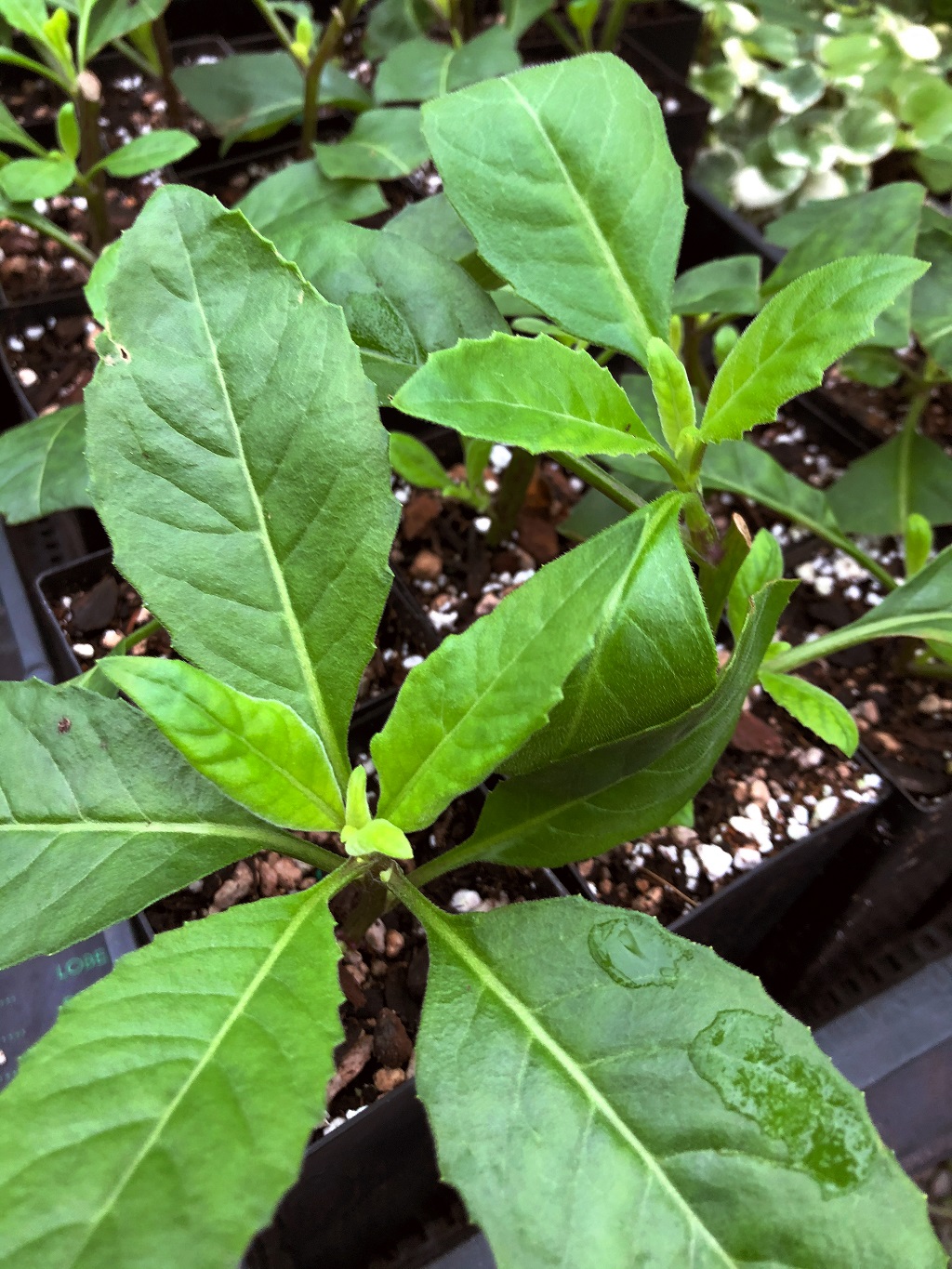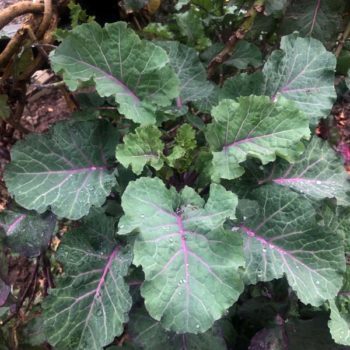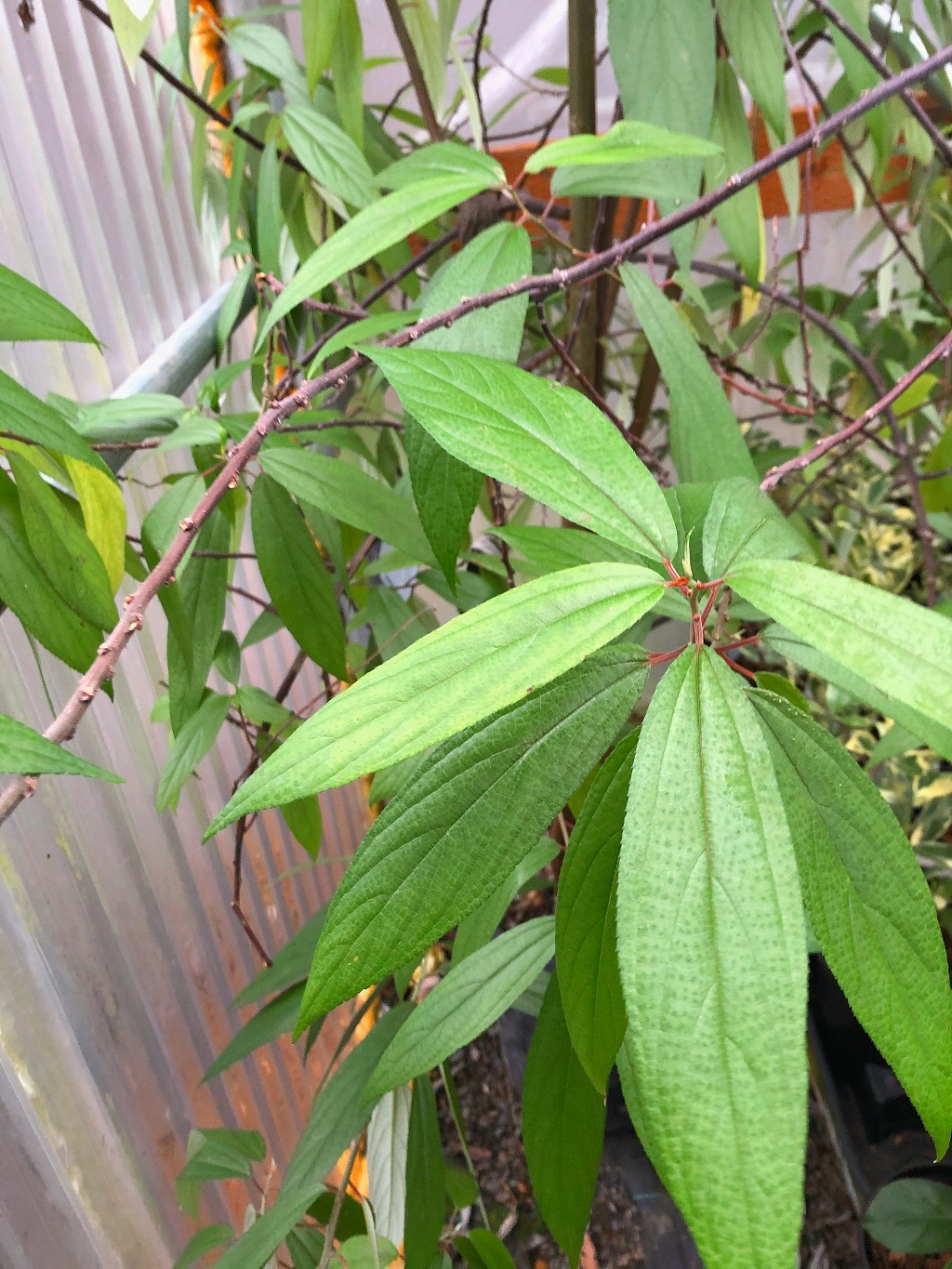
I’m always on the hunt for fresh greens for my salad bowl as the skies in the Pacific Northwest turn to autumn gray. But this year, I’ve discovered some new (to me) perennial greens that will carry on all winter in a greenhouse or in a bright south-facing window. I’m talking with Sam Hubert, the Nursery Manager at One Green World—a Portland, Oregon nursery that ships all over the country. They always have intriguing choices I want to grow—and this year is no exception.
Sam tells me these four plants are nutrient-dense perennials from sub-tropic areas, so they range in hardiness down to Zone 7 but, he says, “In the darker months of winter, they are always way happier in a greenhouse.” He tells me to think of them as “edible houseplants,” and says, “You can harvest fresh greens, even if they flower on you, because they won’t go to seed the way annuals do.”

Okinawa Spinach (Gynura crepiodes) – At 1- to 2-feet tall, and trailing with green leaves that show bright purple on the back side, this one, Sam says, “puts on a ton of growth, even in a one-gallon pot.” Clipping the newest leaves keeps it full and lush. It can be grown outdoors in Zones 9-11, but elsewhere, this highly ornamental green is a great candidate for a patio container in summer, and overwintered indoors. Small orange flowers in spring attract butterflies.
Longevity Spinach (Gynura procumbens) – Another green that tops out at 1 foot, and can be propagated from cuttings. Clipping keeps it bushy, and it’s a strong grower that doesn’t need full sun to thrive. It can be another summer patio plant. While the name implies extra health benefits, that’s not proven; it’s simply another good green for salads, stir fires, and smoothies.

Richmond’s Purple Tree Collards (Brassica oleracea) – “This one stays in a vegetative state,” Sam says, “and it was selected for its lack of flowering.” Good to grow in a large container—10 or 15 gallons—it will look like, Sam says, “a growing vegetable tree.” Hardy to Zone 8, the leaves of new growth are tender, like a fresh kale, while the older leaves stand up to cooking.
Suhosine Mulberry (Debregeasia edulis) – Sam says, “We were growing this one for the little berries, and then discovered it made awesome edible greens.” So now the berries are the bonus on this large shrub with long tropical-looking textured leaves with a silvery underside. Order now for spring. Sam says it’s hardy to Zone 7 in the ground, but it also makes a design statement as a bold-textured large container plant that enjoys the outdoors in summer.


